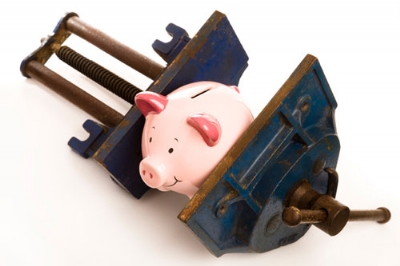Stretching thin marketing budgets is a job requirement for most Export Managers. Listed below are “Ten Tips” for brand building on a “ Budget”.
1. Tap into Government Export Programs
Many countries sponsor strong trade organizations that can aid your export development program. Exports translate to jobs and most countries have well established programs to facilitate the sale of locally produced products. For example, the USA Foreign Agricultural Service will co-fund marketing investments for small-mid size USA food producers through their MAP programs. UBI (France), ICE ( Italy),ICEX (Spain), Austrade( Australia), and AG Canada serve as valuable resources for local exporters. These organizations often sponsor local “Food Events” at leading supermarkets in international countries. For example, Austrade sponsors G’Day USA to showcase Australian food producers to USA consumers. These events are highly publicized and normally feature a relatively modest participation fee.
2. Leverage Relationships with Global Retailers
Wal*Mart, Carrefour, Tesco & Costco all maintain programs to ease the export process for their current suppliers. This usually involves direct consolidated shipments with other local producers, labeling assistance, and placement in a special section in the international aisle of their stores i.e. USA Foods, France Foods, UK Foods etc. The immediate benefit is the streamlined route to market without payment of upfront local marketing fees. This allows you to “Test the Market” prior to a traditional market entry with a local distributor and heavy marketing support.
3. Joint Venture with Local Manufacturer
Another idea is to locate a local player in your category in a country targeted for expansion. You may be able to offer a potential partner innovation in taste/flavor or packaging to complement his local expertise. A joint venture or Co-Branding agreement can produce revenues without significant start-up funds.
4. Build Marketing Costs into Distributor Margin
Many manufacturers build an accrual fund into their distributor margin calculation. Normally the funding level is around 10 % of sales, but can range from 5 -20 % depending on the category. This creates a fund for the local distributor to manage. The accrual fund is created on a “pay as you go” basis, with fund levels proportionate to shipments. In this scenario, the manufacturer usually provides a small fixed sum to create a launch budget prior to initial shipments
5. Free Goods May Fund Trade Marketing
Free goods may be used to offset the cost of trade marketing programs, particularly for established brands. This can be in form of a 1 free with 10 purchase or similar type of promotional events. The benefit is that your budget can be stretched as your cost of goods produced is less than the wholesale cost.
6. Private Label
Retailers source quality products for their private label at the lowest possible price. This eliminates the need for marketing investments. However, private label is difficult if freight expenses are too high.
7. Foodservice Channel
Foodservice/Catering offers a “low investment” route to market versus the supermarket channel. Foodservice usually requires less traditional brand marketing support. Foodservice operators look for tailored solutions with rebates based upon purchase levels. A small budget for SPIF’s ( SPIF- special incentive fund) can generate purchases from independent restaurants.
8. Specialty Retailers
Each country has specialty retailers that serve as alternate channels for your brands. This could include diverse customers such as Cost Plus World Market, Trader Joes, Fresh market or Sprouts in the USA. These retailers maintain different approaches not dependent on heavy manufacturer spending. Their strategy is to offer different brands ( or sizes) versus traditional supermarkets or mass merchandisers.
9. Co-promotion with other Brands
Retailers generate excitement through Theme events around a group of complimentary items or common cause. This could involve participating in Barbecue event with other Barbecue related products : Charcoal, Meat, Picnic Supplies, Drinks, Pickles etc. Another example is a retailer promotion celebrating their anniversary or support of their favorite Charity ( Juvenile Diabetes etc.). In many countries, leading distributors sponsor an annual event for all the brands they represent. Don’t forget the country specific promotions (G’Day USA) mentioned earlier. In each case, manufacturers pay for a portion of the event as costs are spread out among all brand participants.
10. “In & Out” Packs/Gift Baskets
These special packs can generate incremental business without investment in listing fees or shelf space. Examples could include modular displays, trail size shippers, or bonus packs with free product or gift. Gift Baskets are very popular during the Christmas Holidays. This is a good vehicle for “Fine Foods” brands to gain exposure with gourmet consumers.


